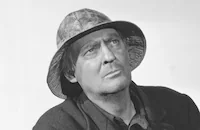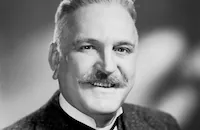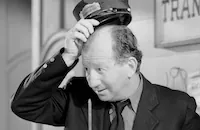At the time production began, Jean Harlow was going through a very tumultuous period in her life. The actress was recovering from extensive oral surgery - her wisdom teeth grew in and became impacted. She was also dealing with the aftermath of a string of failed relationships. Her second husband, Paul Bern, committed suicide in 1932. Then, in 1934, she divorced her third husband, director Hal (Harold) Rosson after only one year of marriage. At the time of her death she wanted to marry actor William Powell but he was opposed to it after two unsuccessful marriages.
Meanwhile, Harlow and Gable had proven their onscreen chemistry in a total of seven movies, including
In the film, Harlow plays Carol Clayton, the daughter of an incorrigible gambler, who loses his fortune (a lucrative horse farm), to his good friend and bookmaker, Duke Bradley (Clark Gable). At the time of the transaction, Frank Clayton (Jonathan Hale), vows that he will never allow his daughter to become involved in the seedy side of the track. Soon after, Hale dies and Carol learns the truth about her father's vices, realizing she'll have to buy back the home in which she had grown up. Although she's just recently become engaged to Hartley Madison (Walter Pidgeon), an extremely wealthy stockbroker, Harlow is determined to earn capital in an "honest" way by betting her own money at the racetrack. As expected, spending time at the track puts her in close contact with Duke. The sexual tension between the two develops into a mutual attraction, but once Carol declares her love for Duke, he spurns her affection and admits he doesn't love her and never will. Of course, the story doesn't end there.
Saratoga would be Jean Harlow's last movie. Near the end of filming, Harlow collapsed on the set while doing a scene with Walter Pidgeon. Director Jack Conway told Harlow to have lunch and rest in her dressing room. The young starlet ended up going home where she stayed for several days. When she finally went to the hospital it was too late. Jean Harlow died of kidney failure at the age of 26. At the time she died, little was known of this illness and many early symptoms simply weren't recognized. Harlow had suffered sun poisoning months before shooting, never fully recovering, and when her wisdom teeth became impacted her condition became critical. It also didn't help that Jean's physician was not one of the better-regarded doctors in Hollywood.
But MGM successfully kept Harlow's health problems concealed so her sudden death came as a complete and total shock. Naturally, rumors abounded. Among them was the widespread belief that her mother, a devout Christian Scientist, prevented her from seeking the medical attention she needed.
Aside from the controversy surrounding the death of Hollywood's most popular female sex symbol, Louis B. Mayer was faced with the dilemma of having to finish a film without the lead actress. Initially, Mayer suggested discarding all the Harlow material and shooting the film with a different actress. This notion was short-lived, however, when the studio was overwhelmed with fan mail beseeching them to release Harlow's final film.
MGM relented and after an exhaustive search to find a stand-in for the late actress, Mary Dees, who had stood in for Harlow in two previous movies, was chosen to serve as Harlow's double. The final scenes were shot from behind the actress who donned very large, floppy hats. Because Dees' voice was much higher than Harlow's, Paula Winslow was chosen to be the voice double. To this day, movie lovers attempt to differentiate between the real Harlow and her body double.
Saratoga was released on July 23, 1937, less than one month after Jean Harlow died. The public, grateful to see Harlow in her last role, lined up in droves at the box office and the movie became one of the biggest moneymakers of the year.
Director: Jack Conway
Producer: Bernard H. Hyman
Screenplay: Anita Loos, Robert E. Hopkins
Cinematography: Ray June
Art Direction: Cedric Gibbons, John S. Detlie
Music: Edward Ward
Cast: Jean Harlow (Carol Clayton), Clark Gable (Duke Bradley), Lionel Barrymore (Grandpa Clayton), Walter Pidgeon (Hartley Madison), Frank Morgan (Jesse Kiffmeyer).
BW-93m. Closed captioning.
by Mary Anne Melear
































